
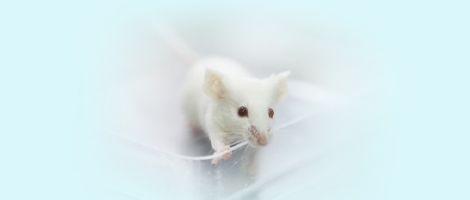

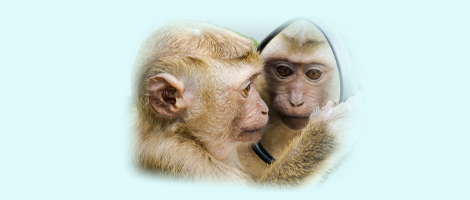
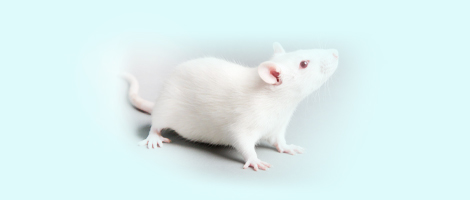
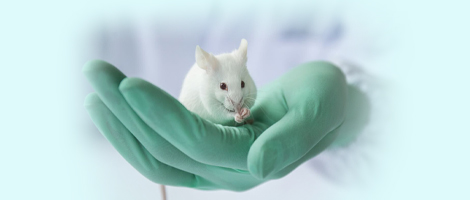
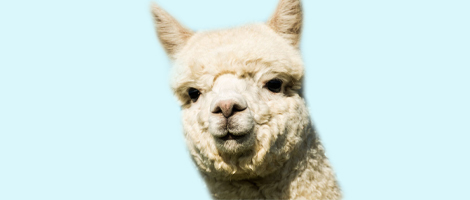







实验动物与比较医学 ›› 2024, Vol. 44 ›› Issue (4): 343-356.DOI: 10.12300/j.issn.1674-5817.2024.112
• 专家论坛 • 下一篇
收稿日期:2024-08-02
修回日期:2024-08-12
出版日期:2024-08-25
发布日期:2024-09-06
作者简介:基金资助:Received:2024-08-02
Revised:2024-08-12
Published:2024-08-25
Online:2024-09-06
Contact:
SUN Qiang (ORCID: 0000-0002-3359-9465), E-mail: qsun@ion.ac.cn摘要:
实验动物在基础科学和临床医学研究中扮演着重要角色,常用的非人灵长类实验动物恒河猴和食蟹猴因与人类高度相似,长期以来备受关注。中国的非人灵长类实验动物产业经过半个多世纪的发展,已从初期的无序扩张逐渐迈向标准化和精细化的成熟阶段。然而,近年来全球生物医药研发势头迅猛,导致对非人灵长类实验动物的需求急剧上升,加之一些非人灵长类实验动物生产企业缺少长远考虑而致繁殖种群老化严重,繁殖力急剧下降,非人灵长类实验动物的供给缺口进一步扩大。在需求上升和供给下降的双重压力下,非人灵长类实验动物的价格急剧上涨。虽然近年来随着生物医药产业周期性下调,非人灵长类实验动物被需求的趋势有所放缓,其价格已有较大回落,但仍处于高位。同时,在价格高企的大背景下,非人灵长类实验动物产业内出现了种群繁殖能力退化加剧、微生物质量控制要求降低、遗传质量控制缺失和盲目投资建场等问题。本研究系统地回顾了中国非人灵长类实验动物(重点是实验猴)产业发展的历史与现状,探讨了当前行业格局的成因,以及面临的潜在挑战与机遇,期望能为中国非人灵长类实验动物产业的未来发展提供一些参考和启示。
中图分类号:
孙强. 中国实验猴产业的历史、现状、挑战与机遇[J]. 实验动物与比较医学, 2024, 44(4): 343-356. DOI: 10.12300/j.issn.1674-5817.2024.112.
SUN Qiang. History, Current Status, Challenges and Opportunities of Laboratory Monkey Industry in China[J]. Laboratory Animal and Comparative Medicine, 2024, 44(4): 343-356. DOI: 10.12300/j.issn.1674-5817.2024.112.
| 年份Year | 美国进口数/只 Total number of imports in the USA | 主要出口国份额/只(%) Share of major exporting countries n (%) | |||||
|---|---|---|---|---|---|---|---|
中国 China | 柬埔寨 Cambodia | 毛里求斯 Mauritius | 越南 Vietnam | 菲律宾 Philippines | 印度尼西亚 Indonesia | ||
| 2002 | 19 160 | - | - | - | - | - | - |
| 2003 | 18 650 | - | - | - | - | - | - |
| 2004 | 18 534 | - | - | - | - | - | - |
| 2005 | 26 070 | - | - | - | - | - | - |
| 2006 | 26 638 | 13 500 (50.7) | - | - | - | - | - |
| 2007 | 25 899 | 15 053 (58.1) | - | - | - | - | - |
| 2008 | 28 091 | 18 087 (64.4) | - | - | - | - | - |
| 2009 | 22 098 | 13 158 (59.5) | - | - | - | - | - |
| 2010 | 21 315 | 13 216 (62.0) | - | - | - | - | - |
| 2011 | 18 078 | 12 574 (69.6) | - | - | - | - | - |
| 2012 | 16 000 | 8 928 (55.8) | - | - | - | - | - |
| 2013 | 20 133 | 10 902 (54.1) | 2 390 (11.9) | 2 693 (13.4) | 1 920 (9.5) | 0 (0) | 0 (0) |
| 2014 | 29 939 | 19 455 (65.0) | 2 759 (9.2) | 4 055 (13.5) | 960 (3.2) | 0 (0) | 0 (0) |
| 2015 | 20 616 | 12 829 (62.2) | 705 (3.4) | 3 957 (19.2) | 1 396 (6.8) | 0 (0) | 0 (0) |
| 2016 | 30 330 | 19 856 (65.5) | 3 770 (12.4) | 4 187 (13.8) | 480 (1.6) | 0 (0) | 0 (0) |
| 2017 | 23 348 | 14 249 (61.0) | 2 768 (11.6) | 4 096 (17.5) | 480 (2.1) | 0 (0) | 0 (0) |
| 2018 | 30 317 | 19 044 (62.8) | 6 081 (20.1) | 2 313 (7.6) | 600 (2.0) | 0 (0) | 0 (0) |
| 2019 | 32 725 | 15 887 (48.5) | 10 631 (32.5) | 3 725 (11.4) | 720 (2.2) | 350 (1.1) | 0 (0) |
| 2020 | 27 429 | 360 (1.3) | 17 820 (65.0) | 6 507 (23.7) | 600 (2.2) | 350 (1.3) | 0 (0) |
| 2021 | 32 276 | 0 (0) | 18 568 (57.5) | 9 931 (30.8) | 1 900 (5.9) | 705 (2.2) | 120 (0.4) |
| 2022 | 29 667 | 0 (0) | 17 992 (60.6) | 6 929 (23.4) | 2 372 (8.0) | 362 (1.2) | 1 110 (3.7) |
| 2023 | 17 042 | 0 (0) | 189 (1.1) | 9 868 (58.0) | 3 782 (22.2) | 1 049 (6.2) | 1 402 (8.2) |
表1 美国历年实验猴进口量与主要出口国占比
Table 1 Annual import volume of laboratory monkeys to the United States and share of major exporting countries
| 年份Year | 美国进口数/只 Total number of imports in the USA | 主要出口国份额/只(%) Share of major exporting countries n (%) | |||||
|---|---|---|---|---|---|---|---|
中国 China | 柬埔寨 Cambodia | 毛里求斯 Mauritius | 越南 Vietnam | 菲律宾 Philippines | 印度尼西亚 Indonesia | ||
| 2002 | 19 160 | - | - | - | - | - | - |
| 2003 | 18 650 | - | - | - | - | - | - |
| 2004 | 18 534 | - | - | - | - | - | - |
| 2005 | 26 070 | - | - | - | - | - | - |
| 2006 | 26 638 | 13 500 (50.7) | - | - | - | - | - |
| 2007 | 25 899 | 15 053 (58.1) | - | - | - | - | - |
| 2008 | 28 091 | 18 087 (64.4) | - | - | - | - | - |
| 2009 | 22 098 | 13 158 (59.5) | - | - | - | - | - |
| 2010 | 21 315 | 13 216 (62.0) | - | - | - | - | - |
| 2011 | 18 078 | 12 574 (69.6) | - | - | - | - | - |
| 2012 | 16 000 | 8 928 (55.8) | - | - | - | - | - |
| 2013 | 20 133 | 10 902 (54.1) | 2 390 (11.9) | 2 693 (13.4) | 1 920 (9.5) | 0 (0) | 0 (0) |
| 2014 | 29 939 | 19 455 (65.0) | 2 759 (9.2) | 4 055 (13.5) | 960 (3.2) | 0 (0) | 0 (0) |
| 2015 | 20 616 | 12 829 (62.2) | 705 (3.4) | 3 957 (19.2) | 1 396 (6.8) | 0 (0) | 0 (0) |
| 2016 | 30 330 | 19 856 (65.5) | 3 770 (12.4) | 4 187 (13.8) | 480 (1.6) | 0 (0) | 0 (0) |
| 2017 | 23 348 | 14 249 (61.0) | 2 768 (11.6) | 4 096 (17.5) | 480 (2.1) | 0 (0) | 0 (0) |
| 2018 | 30 317 | 19 044 (62.8) | 6 081 (20.1) | 2 313 (7.6) | 600 (2.0) | 0 (0) | 0 (0) |
| 2019 | 32 725 | 15 887 (48.5) | 10 631 (32.5) | 3 725 (11.4) | 720 (2.2) | 350 (1.1) | 0 (0) |
| 2020 | 27 429 | 360 (1.3) | 17 820 (65.0) | 6 507 (23.7) | 600 (2.2) | 350 (1.3) | 0 (0) |
| 2021 | 32 276 | 0 (0) | 18 568 (57.5) | 9 931 (30.8) | 1 900 (5.9) | 705 (2.2) | 120 (0.4) |
| 2022 | 29 667 | 0 (0) | 17 992 (60.6) | 6 929 (23.4) | 2 372 (8.0) | 362 (1.2) | 1 110 (3.7) |
| 2023 | 17 042 | 0 (0) | 189 (1.1) | 9 868 (58.0) | 3 782 (22.2) | 1 049 (6.2) | 1 402 (8.2) |
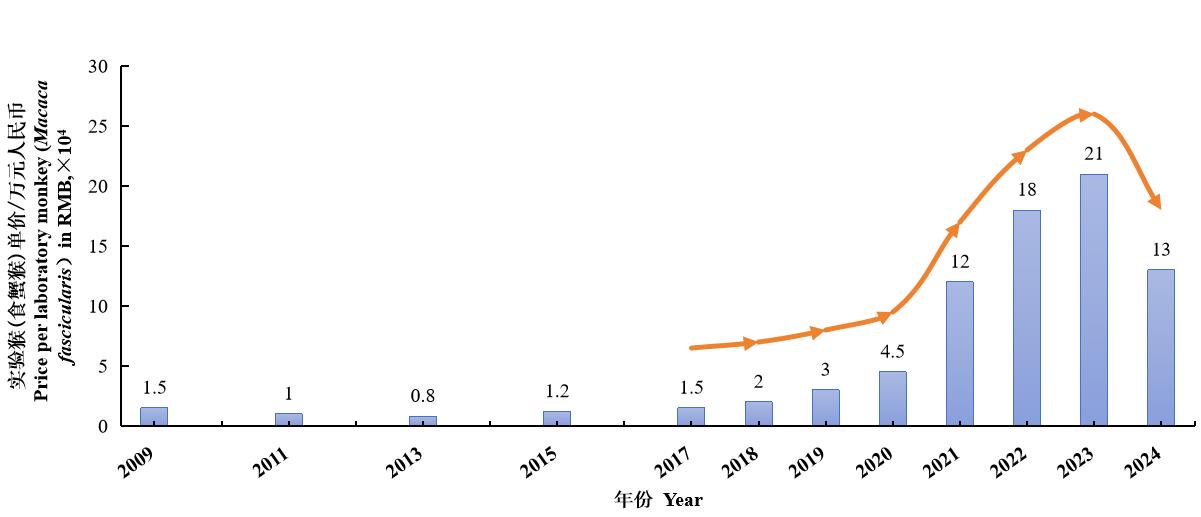
图1 2009—2024年中国实验猴单价走势图注:2024年数据为当年上半年的实验猴价格。
Figure 1 Trend of unit price of laboratory monkeys in China from 2009 to 2024Note:Data for 2024 represent the price of laboratory monkeys in the first half of the year.
编号 Number | 靶点 Target | 交叉反应 Cross reaction | 临床症状 Clinical symptoms | 安全性评价反应 Safety evaluation response | ||
|---|---|---|---|---|---|---|
啮齿类 Rodent | 灵长类 Primate | 啮齿类 Rodent | 灵长类 Primate | |||
| Bio1 | GM-CSFRα | 有 | 有 | 肺泡蛋白沉积症 | 无 | 有 |
| Bio2 | DLL4 | 有 | 有 | 肺动脉内膜空泡 | 无 | 有 |
| Bio3 | TGFβ1 | 有 | 有 | 皮肤肿瘤 | 无 | 有 |
| Bio4 | Unknown | 无 | 有 | 肝毒性,眶周肿胀 | NA | 有 |
| Bio5 | Cytokine | 无 | 有 | 生殖毒性 | NA | 有 |
| Bio6 | CD40 | 无 | 有 | 血栓,心肌梗死 | NA | 有 |
| Bio7 | FGF19 | 无 | 有 | 干扰胆酸代谢 | NA | 有 |
| Bio8 | Unknown | 无 | 有 | 免疫毒性 | NA | 有 |
| Bio9 | JAK/STAT | 无 | 有 | 胸腺萎缩 | NA | 有 |
表2 抗体药物研发的临床前实验动物选择
Table 2 Selection of preclinical laboratory animals for antibody drug development
编号 Number | 靶点 Target | 交叉反应 Cross reaction | 临床症状 Clinical symptoms | 安全性评价反应 Safety evaluation response | ||
|---|---|---|---|---|---|---|
啮齿类 Rodent | 灵长类 Primate | 啮齿类 Rodent | 灵长类 Primate | |||
| Bio1 | GM-CSFRα | 有 | 有 | 肺泡蛋白沉积症 | 无 | 有 |
| Bio2 | DLL4 | 有 | 有 | 肺动脉内膜空泡 | 无 | 有 |
| Bio3 | TGFβ1 | 有 | 有 | 皮肤肿瘤 | 无 | 有 |
| Bio4 | Unknown | 无 | 有 | 肝毒性,眶周肿胀 | NA | 有 |
| Bio5 | Cytokine | 无 | 有 | 生殖毒性 | NA | 有 |
| Bio6 | CD40 | 无 | 有 | 血栓,心肌梗死 | NA | 有 |
| Bio7 | FGF19 | 无 | 有 | 干扰胆酸代谢 | NA | 有 |
| Bio8 | Unknown | 无 | 有 | 免疫毒性 | NA | 有 |
| Bio9 | JAK/STAT | 无 | 有 | 胸腺萎缩 | NA | 有 |
年度 Year | 上市新药总数/个 Total number of new drugs | 生物制剂数量及占比 Biological agents n (%) |
|---|---|---|
| 2013 | 27 | 1 (3.7) |
| 2014 | 41 | 6 (14.6) |
| 2015 | 45 | 9 (20.0) |
| 2016 | 22 | 6 (27.3) |
| 2017 | 46 | 11 (23.9) |
| 2018 | 59 | 17 (28.8) |
| 2019 | 48 | 11 (22.9) |
| 2020 | 53 | 15 (28.3) |
| 2021 | 50 | 14 (28.0) |
| 2022 | 37 | 14 (37.8) |
| 2023 | 55 | 27 (49.1) |
表3 近10年美国食品药品监督管理局批准上市的新药和生物制剂数量汇总
Table 3 Summary of number of new drugs and biological agents approved by U.S. Food and Drug Administration in the last 10 years
年度 Year | 上市新药总数/个 Total number of new drugs | 生物制剂数量及占比 Biological agents n (%) |
|---|---|---|
| 2013 | 27 | 1 (3.7) |
| 2014 | 41 | 6 (14.6) |
| 2015 | 45 | 9 (20.0) |
| 2016 | 22 | 6 (27.3) |
| 2017 | 46 | 11 (23.9) |
| 2018 | 59 | 17 (28.8) |
| 2019 | 48 | 11 (22.9) |
| 2020 | 53 | 15 (28.3) |
| 2021 | 50 | 14 (28.0) |
| 2022 | 37 | 14 (37.8) |
| 2023 | 55 | 27 (49.1) |
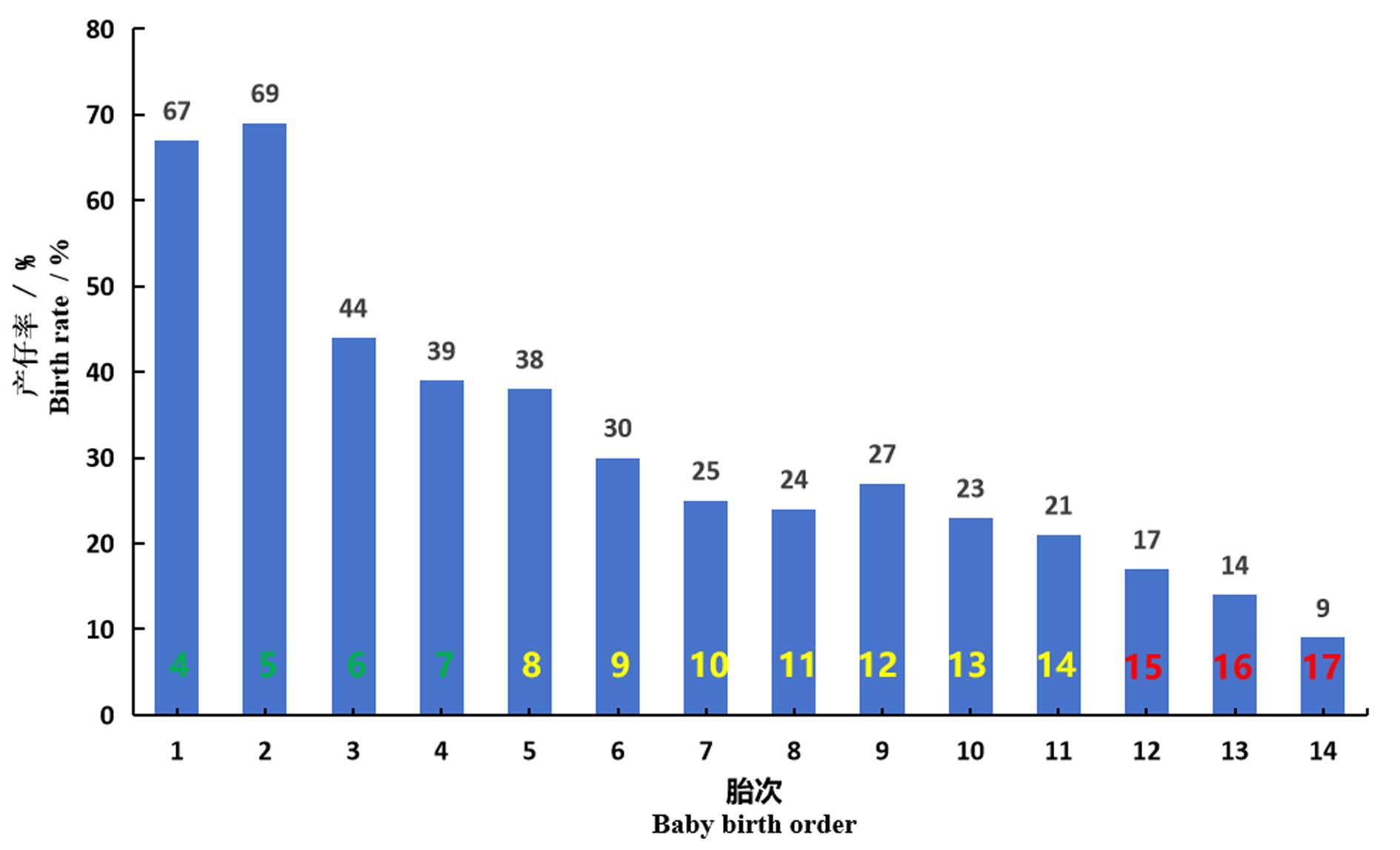
图2 食蟹猴繁殖能力随年龄的变化趋势注:横坐标轴上方的彩色数字代表不同胎次的平均年龄分布,数据引自文献[4]。
Figure 2 Changes in reproductive capacity of Macaca fascicularis with ageNote:The colored numbers above the horizontal axis represent the average age distribution of different birth orders. The data were referenced from literature [4].
地区 Area | 食物投喂 Food feeding status | 个体数/km2 Number per km2 | 普查年份 Census year | 备注 Note |
|---|---|---|---|---|
整个东南亚 Whole Southeast Asia | 无 | 55.0 | 1995 | Jack Fooden依据博物馆内生物样本和泰国及印度尼西亚的部分地区现场普查估算[ |
| 有 | 100.0 | |||
新加坡 Singapore | 半投喂 | 6.9 | 2015 | 新加坡全岛92个种群普查数据[ |
印度尼西亚巴厘岛 Bali, Indonesia | 有 | 5 850.0 | 1989 | 主要普查了寺庙附近的猴子[ |
| 有 | 555.0 | 2014 | 大范围多种群普查数据[ | |
| 无 | 70.0 | |||
| 无 | 143.4 | 1995 | Jack Fooden依据博物馆内生物样本及现场普查估算[ | |
| 无 | 9.9 | 2009 | 苏门答腊中西部地区普查数据[ | |
越南 Vietnam | 有 | 67.0 | 2004 | 越南红树林区域普查[ |
印度尼西亚爪哇岛 Java, Indonesia | 无 | 55.0 | 1995 | Jack Fooden依据博物馆内生物样本及现场普查估算[ |
| 无 | 41.4 | 2019 | 250 km2的巴鲁兰国家森林公园(自然保护区)普查数据[ | |
| 有 | 1 449.0 |
表4 东南亚食蟹猴普查数据汇总
Table 4 Summary of census data on Macaca irus in Southeast Asia
地区 Area | 食物投喂 Food feeding status | 个体数/km2 Number per km2 | 普查年份 Census year | 备注 Note |
|---|---|---|---|---|
整个东南亚 Whole Southeast Asia | 无 | 55.0 | 1995 | Jack Fooden依据博物馆内生物样本和泰国及印度尼西亚的部分地区现场普查估算[ |
| 有 | 100.0 | |||
新加坡 Singapore | 半投喂 | 6.9 | 2015 | 新加坡全岛92个种群普查数据[ |
印度尼西亚巴厘岛 Bali, Indonesia | 有 | 5 850.0 | 1989 | 主要普查了寺庙附近的猴子[ |
| 有 | 555.0 | 2014 | 大范围多种群普查数据[ | |
| 无 | 70.0 | |||
| 无 | 143.4 | 1995 | Jack Fooden依据博物馆内生物样本及现场普查估算[ | |
| 无 | 9.9 | 2009 | 苏门答腊中西部地区普查数据[ | |
越南 Vietnam | 有 | 67.0 | 2004 | 越南红树林区域普查[ |
印度尼西亚爪哇岛 Java, Indonesia | 无 | 55.0 | 1995 | Jack Fooden依据博物馆内生物样本及现场普查估算[ |
| 无 | 41.4 | 2019 | 250 km2的巴鲁兰国家森林公园(自然保护区)普查数据[ | |
| 有 | 1 449.0 |
| 1 | GARNER J P. The significance of meaning: why do over 90% of behavioral neuroscience results fail to translate to humans, and what can we do to fix it?[J]. ILAR J, 2014, 55(3):438-456. DOI: 10.1093/ilar/ilu047 . |
| 2 | IWASAKI K, UNO Y, UTOH M, et al. Importance of cynomolgus monkeys in development of monoclonal antibody drugs[J]. Drug Metab Pharmacokinet, 2019, 34(1):55-63. DOI: 10.1016/j.dmpk.2018.02.003 . |
| 3 | BRENNAN F R, CAVAGNARO J, MCKEEVER K, et al. Safety testing of monoclonal antibodies in non-human Primates: case studies highlighting their impact on human risk assessment[J]. mAbs, 2018, 10(1):1-17. DOI: 10.1080/19420862. 2017.1389364 . |
| 4 | NAIKEN S, GRIFFITHS M A, EDOUARD L, et al. Factors influencing reproduction in captive-bred cynomolgus monkeys (Macaca fascicularis) from Mauritius[J]. Am J Primatol, 2015, 77(12):1290-1298. DOI: 10.1002/ajp.22482 . |
| 5 | FOODEN J. Systematic review of Southeast Asian longtail macaques, Macaca fascicularis (Raffles, [1821])[J]. Fieldiana Zoology, 1995, 81:1-206. DOI: 10.5962/bhl.title.3456 . |
| 6 | HANSEN M F, NAWANGSARI V A, VAN BEEST F M, et al. Estimating densities and spatial distribution of a commensal primate species, the long-tailed macaque (Macaca fascicularis)[J]. Conservat Sci And Prac, 2019, 1(9): e88. DOI: 10.1111/csp2.88 . |
| 7 | RILEY C M, JAYASRI S L, GUMERT M D. Results of a nationwide census of the long-tailed macaque (Macaca fascicularis) population of Singapore[J]. Raffles Bull Zool, 2015, 63:503-515. |
| 8 | KARUPPANNAN K, SAABAN S, MUSTAPA A R, et al. Population status of Long-Tailed Macaque (Macaca fascicularis) in Peninsular Malaysia[J]. Primatology, 2014, 3(1): 1-4. DOI:10.4172/2167-6801.1000118 . |
| 9 | HANSEN M F, GILL M, NAWANGSARI V A, et al. Conservation of long-tailed macaques: Implications of the updated IUCN status and the covid-19 pandemic[J]. Primate Conservation, 2021, 35:1-11. |
| 10 | HANSEN M F, ANG A, TRINH T, et al. Macaca fascicularis. The IUCN Red List of Threatened Species 2022: e.T12551A199563077[EB/OL]. (2022-03-07)[2024-07-15]. https://dx.doi.org/10.2305/IUCN.UK.2022-1.RLTS.T12551A199563077.en. |
| 11 | U.S. Attorney's Office, Southern District of Florid. Cambodian officials and Six co-conspirators indicted for taking part in Primate smuggling scheme[EB/OL].(2022-11-16)[2024-07-15]. https://www.justice.gov/usao-sdfl/pr/cambodian-officials- and- six-co-conspirators-indicted-taking-part-primate-smug- gling-0. |
| 12 | TRUITT, B. Federal monkey smuggling investigation now involves Wilmington's Charles River Labs[EB/OL]. (2023-02-22)[2024-07-15]. https://www.cbsnews.com/boston/news/charles-river-labs-monkeys-subpoena/. |
| 13 | WARIT S, BILLAMAS P, MAKHAO N, et al. Detection of tuberculosis in cynomolgus macaques (Macaca fascicularis) using a supplementary Monkey Interferon Gamma Releasing Assay (mIGRA)[J]. Sci Rep, 2020, 10(1):16759. DOI: 10.1038/s41598-020-73655-3 . |
| 14 | WANG W L, QI W J, LIU J Y, et al. First human infection case of monkey B virus identified in China, 2021[J]. China CDC Wkly, 2021, 3(29):632-633. DOI: 10.46234/ccdcw2021.154 . |
| 15 | XU L B, YANG Y P, LI Y D, et al. Characterizing the pathogenicity and immunogenicity of Simian retrovirus subtype 8 (SRV-8) using SRV-8-infected Cynomolgus monkeys[J]. Viruses, 2023, 15(7):1538. DOI: 10.3390/v15071538 . |
| 16 | 杨雪. 围绕一只猴子的竞争[N/OL]. 新京报, 2021-09-09 [2024-07-15]. https://www.bjnews.com.cn/detail/163111532114807.html. |
| YANG X. Competition around a monkey[N/OL]. The Beijing News, 2021-09-09[2024-07-15].https://www.bjnews.com.cn/detail/163111532114807.html. | |
| 17 | MEESAWAT S, WARIT S, HAMADA Y, et al. Prevalence of Mycobacterium tuberculosis complex among wild Rhesus macaques and 2 subspecies of long-tailed macaques, Thailand, 2018–2022[J]. Emerg Infect Dis, 2023, 29(3):551-560. DOI: 10.3201/eid2903.221486 . |
| 18 | TRUONG Q L, DUC H M, ANH T N, et al. Isolation and genetic characterization of canine distemper virus in domestic dogs from central and northern provinces in Vietnam[J]. Res Vet Sci, 2022, 153:105-114. DOI: 10.1016/j.rvsc.2022.10.027 . |
| 19 | SUN Z Z, LI A X, YE H H, et al. Natural infection with canine distemper virus in hand-feeding Rhesus monkeys in China[J]. Vet Microbiol, 2010, 141(3-4):374-378. DOI: 10.1016/j.vetmic. 2009.09.024 . |
| 20 | QIU W. Canine distemper outbreak in Rhesus monkeys, China[J]. Emerg Infect Dis, 2011, 17(8): 1541-1543. DOI: 10.3201/eid1708.101153 . |
| 21 | ZHANG X J, MENG Y H, HOUGHTON P, et al. Ancestry, Plasmodium cynomolgi prevalence and rhesus macaque admixture in cynomolgus macaques (Macaca fascicularis) bred for export in Chinese breeding farms[J]. J Med Primatol, 2017, 46(2):31-41. DOI: 10.1111/jmp.12256 . |
| 22 | ARNDT T, MEINDEL M, CLARKE J, et al. Comparison of routine hematology, coagulation, and clinical chemistry parameters of Cynomolgus macaques of Mauritius origin with Cynomolgus macaques of Cambodia, China, and Vietnam origin[J]. Toxicol Pathol, 2022, 50(5):591-606. DOI: 10.1177/01926233221089843 . |
| 23 | National Academies of Sciences, Engineering, and Medicine; Division on Earth and Life Studies; Health and Medicine Division; et al. Nonhuman primate models in biomedical research: state of the science and future needs[R]. Washington (DC): National Academies Press (US), 2023. DOI: 10.17226/26857 . |
| 24 | LIU Z, CAI Y J, WANG Y, et al. Cloning of macaque monkeys by somatic cell nuclear transfer[J]. Cell, 2018, 172(4):881-887, e7. DOI: 10.1016/j.cell.2018.01.020 . |
| 25 | LIU Z, CAI Y J, LIAO Z D, et al. Cloning of a gene-edited macaque monkey by somatic cell nuclear transfer[J]. Natl Sci Rev, 2019, 6(1):101-108. DOI: 10.1093/nsr/nwz003 . |
| 26 | LIAO Z D, ZHANG J X, SUN S Y, et al. Reprogramming mechanism dissection and trophoblast replacement application in monkey somatic cell nuclear transfer[J]. Nat Commun, 2024, 15:5. DOI: 10.1038/s41467-023-43985-7 . |
| 27 | SUN Q, DONG J, YANG W T, et al. Efficient reproduction of cynomolgus monkey using pronuclear embryo transfer technique[J]. Proc Natl Acad Sci U S A, 2008, 105(35):12956-12960. DOI: 10.1073/pnas.0805639105 . |
| 28 | LIU Z, NIE Y H, ZHANG C C, et al. Generation of macaques with sperm derived from juvenile monkey testicular xenografts[J]. Cell Res, 2016, 26(1):139-142. DOI: 10.1038/cr.2015.112 . |
| 29 | LIU Z, LI K, CAI Y J, et al. Accelerated passage of gene-modified monkeys by hormone-induced precocious puberty[J]. Natl Sci Rev, 2021, 8(7): nwab083. DOI: 10.1093/nsr/nwab083 . |
| 30 | 张茹帆, 伍乘风, 陈涛, 等. 海南猕猴的形态学特征及其适应性[J]. 人类学学报, 2021, 40(1):97-108. DOI: 10.16359/j.cnki.cn11-1963/q.2018.0040 . |
| ZHANG R F, WU C F, CHEN T, et al. Morphological characteristics of Macaca mulatta brevicaudus[J]. Acta Anthropol Sin, 2021, 40(1):97-108. DOI: 10.16359/j.cnki.cn11-1963/q.2018.0040 . |
| [1] | 焦青贞, 吴桂华, 唐雯, 樊帆, 冯凯, 杨春响, 乔建, 邓素芳. 暖通系统暂停送风下实验动物设施氨浓度的动态监测与分析[J]. 实验动物与比较医学, 2025, 45(4): 490-495. |
| [2] | 刘文涛, 罗艳红, 龙永霞, 罗启慧, 陈正礼, 刘丽达. 四川省实验动物设施常见环境问题及检测经验[J]. 实验动物与比较医学, 2025, 45(4): 483-489. |
| [3] | 王庭君, 罗浩, 陈琦. 基于人工智能的实验动物中心信息化升级及应用实践[J]. 实验动物与比较医学, 2025, 45(4): 473-482. |
| [4] | 谭邓旭, 马一凡, 刘可, 张延英, 师长宏. 重塑细胞间互动:类器官共培养模型赋能疾病机制与治疗探索[J]. 实验动物与比较医学, 2025, 45(3): 309-317. |
| [5] | 沈黄奕, 黄宇飞, 杨云鹏. 实验动物肠道菌群特征分析及性别差异性的研究进展[J]. 实验动物与比较医学, 2025, 45(3): 349-359. |
| [6] | 王晨娟, 杨玲焰, 王立鹏, 孙雪萍, 李静文, 郭连香, 荣荣, 时长军. 2019年某实验猴养殖场食蟹猴犬瘟热暴发的诊断[J]. 实验动物与比较医学, 2025, 45(3): 360-367. |
| [7] | 李倩, 陈佳琦, 李丽红, 张飞燕, 毛华明, 吕龙宝. 浅谈非人灵长类实验动物从业人员的职业健康管理措施[J]. 实验动物与比较医学, 2025, 45(2): 197-205. |
| [8] | 邵奇鸣, 卞勇, 施爱民. 实验动物机构职业健康安全管理体系建设要点[J]. 实验动物与比较医学, 2025, 45(2): 188-196. |
| [9] | 蔡梦诗, 苏醒, 邵奇鸣. 实验动物机构建设项目职业健康防护设施“三同时”的实施要求[J]. 实验动物与比较医学, 2025, 45(2): 221-228. |
| [10] | 张倩, 邓青秀, 蔡林. 国内普通高校实验动物从业人员职业健康风险防控概述[J]. 实验动物与比较医学, 2025, 45(2): 206-213. |
| [11] | 许超, 孙秋芳, 邵奇鸣. 实验动物机构职业健康档案建立内容及要点[J]. 实验动物与比较医学, 2025, 45(2): 214-220. |
| [12] | 肖文娴, 吕龙宝. 非人灵长类实验动物用于人类卵巢衰老研究进展[J]. 实验动物与比较医学, 2025, 45(1): 47-54. |
| [13] | 侯冬霞, 铁祚庥, 陆勇, 南盼盼, 鲍洁. 实验动物屏障环境设施安全准入体系建设的探索与实践——以南京大学仙林校区为例[J]. 实验动物与比较医学, 2025, 45(1): 96-100. |
| [14] | 刘巍, 张心妍, 侯丰田, 许中衎, 马丽颖. 实验动物设施换气次数检测能力验证结果评价[J]. 实验动物与比较医学, 2025, 45(1): 87-95. |
| [15] | 刘丽达, 陈兵, 谢娜, 刘丽, 庄思琪, 邹弈星. 2017—2023年四川省实验动物寄生虫和微生物质量抽检报告分析[J]. 实验动物与比较医学, 2024, 44(6): 654-660. |
| 阅读次数 | ||||||
|
全文 |
|
|||||
|
摘要 |
|
|||||

